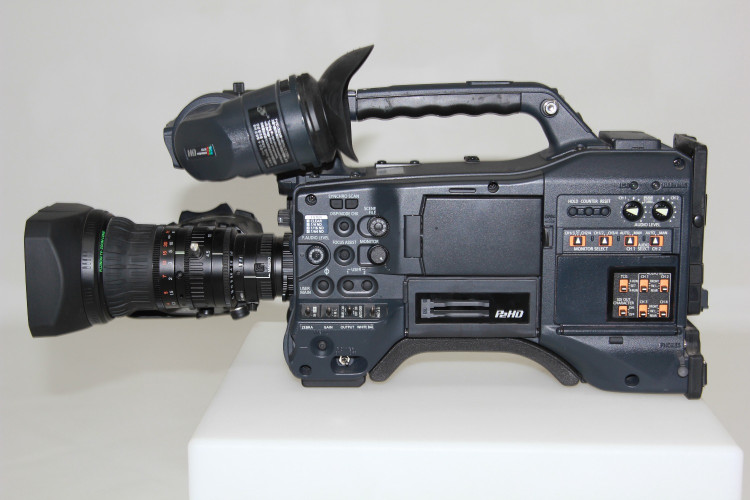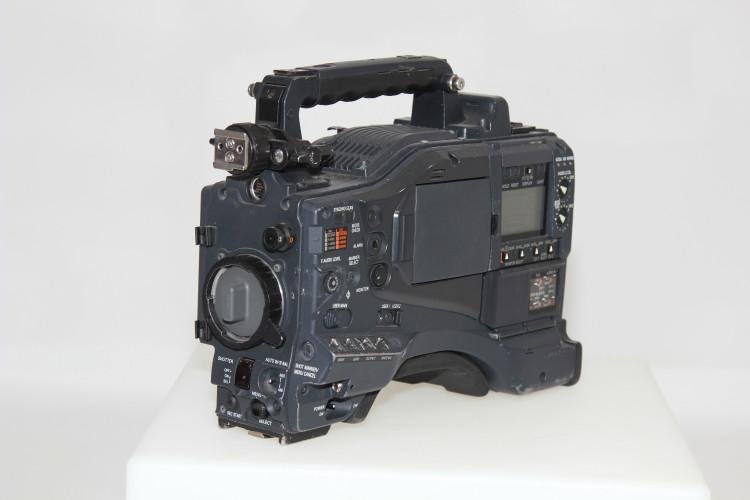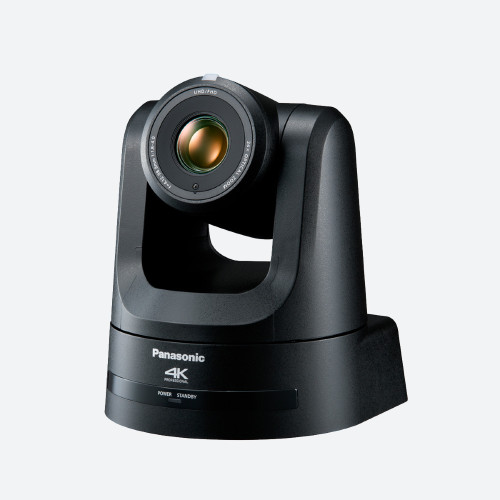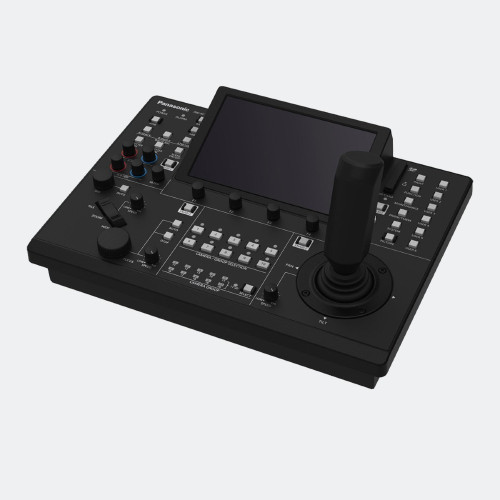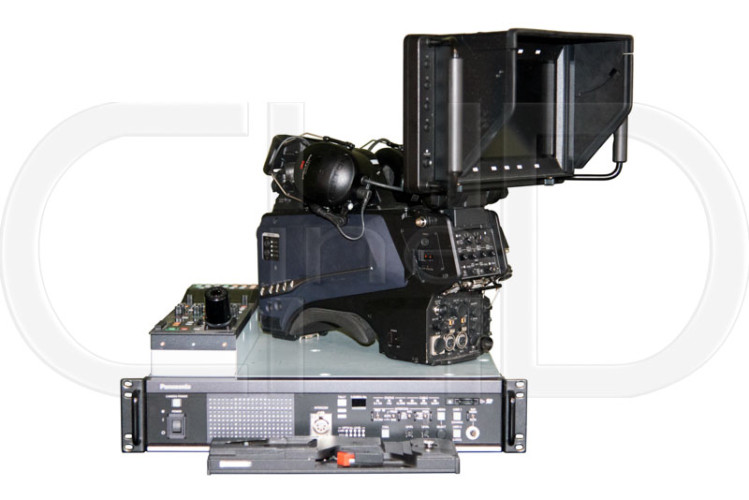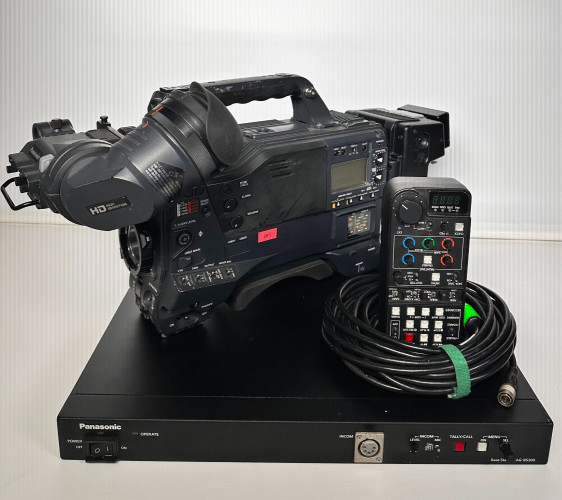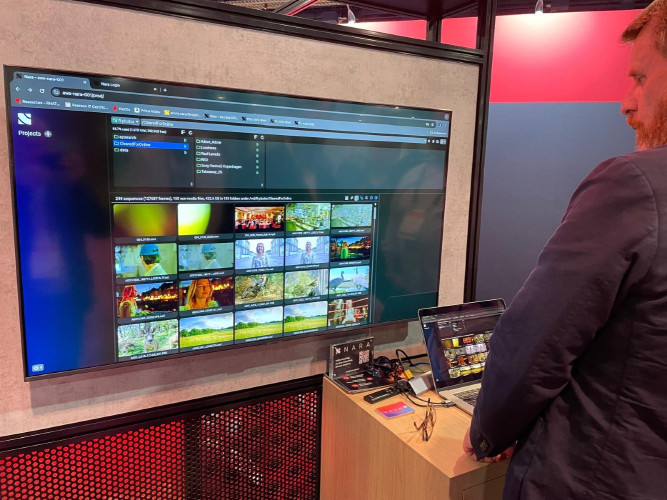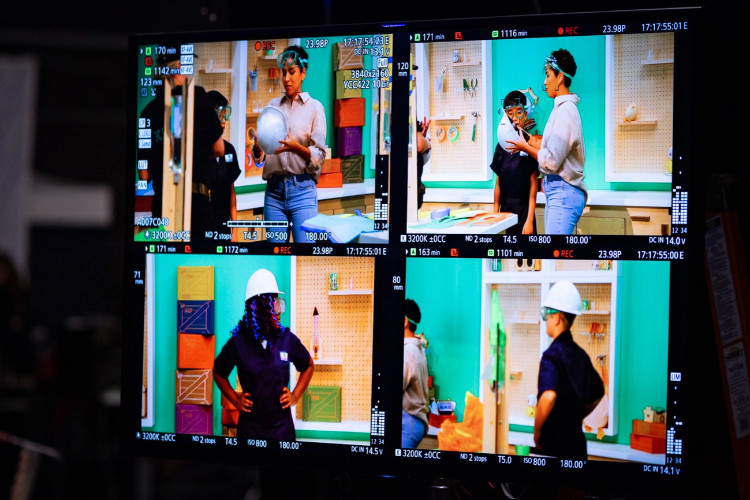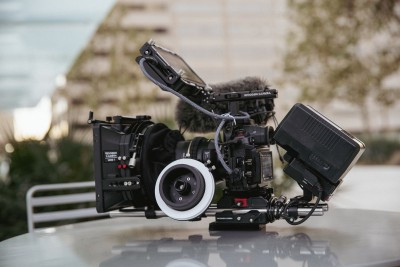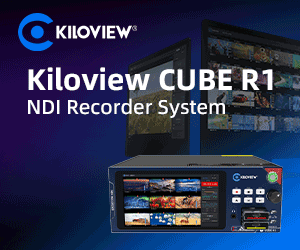Panasonic AF101 review

Author: Bob Pank#
Published 1st September 2011
In 2008 Canon released its latest stills camera the 5DMk2. Little did they know what they had released on the videographers world.
This so called STILLS camera had a hidden talent, that of course of remarkably good 1080p video. The indie film makers went wild, no more did they have to bolt on large cumbersome depth of field adapters to their video cameras in order to try and get that lovely shallow depth of field we see in big budget movies. No this little Camera with its massive sensor gave us the ability to use 35mm stills glass and achieve that film look in the palm of our hand.
Of course there were some buts, it had no ability to take a decent sound source, and anything you plugged into its pitiful mic input was not well recorded anyway, we had an approximate 10 mins of recording before the thing over heated, no decent view finder, no meters, peaking, volume level control, rolling shutter problems, aliasing, moir………. but who cares, it had shallow depth of field!!
Forward wind 3 years and the DSLR video market is huge, the amount of kit you can buy to bolt onto a 5D, 7D etc is staggering. All of this kit is there to fill holes in the DSLR design. Let’s not forget these are stills cameras first and foremost. What we need is a camera that has this nice large sensor like and DSLR but with all the functionality of a proper video camera. Oh and we don't want to spend £30k + plus for one thank you.
Well late last year Panasonic released the AG-AF101 and may well have given us the next step up from a DSLR. This is probably just the start of large chip camera's
allowing us to use just about any stills lens and get that nice film look on our footage. Now I know that Sony has the PMW-F3 but I want to look at the AG-Af101 in this article. The main reason being price. The F3 starts at about £12,000 whereas the AF101 will only set you back about £4,500 that’s a massive difference in price, and makes the Panasonic a natural and affordable next step up from a DSLR. I am also not going into a lot of detail, there are many in depth reviews online and I just want to go over some of the features that set this camera apart from DSLR's
First of all this camera is £4,500, don't expect to hold something that feels as solid or heavy as a RED. It’s light, really light. You purchase the camera without any lens so you need to consider glass as well when purchasing this baby. However if like me you have a load of Canon and Nikon glass from your DSLR kit then you merely have to purchase the correct adapter and slap it on. The sensor is a Micro 4/3 sensor. This is as close as you can get to a standard motion film size.
It’s beyond the scope of this article to go into comparative sensor sizes and crop factors, just Google it. The sensor on this camera gives you a 2x crop. Basically it seems that whatever lens you put on it you can double the focal length. This makes it harder to get a wide shot with this camera, but I have to say, stick a Tokina 11-16 2.8 on it (Nikon fit, will explain why next) and it seemed plenty wide enough for my use.
Now I mentioned Nikon fit, and there is a good reason for this. Currently most modern and decent Canon glass does not have a separate aperture ring, this is fine on the DSLR as you can control the apart with the camera. Not so on the AF101, there is of course no Canon electronics to do this. Stick a Canon lens on this with the current adapters and you have to leave the aperture wide open, use an adapter with its own aperture control which is set behind the lens so gives massive amount of vignetting or put the lens on a Canon, set the aperture then back on the AF101 which let’s face it is not going to happen. Nikon lenses on the other hand have a nice manual aperture ring and a simple adapter is all that is needed to have them fully functional on the camera. I must point out that there is soon to be an adapter for the Canon lens with the required electronics so hopefully we can use our nice Canon lenses effectively with the camera.
What really sets this camera apart from DSLRs is the extras, let’s look at these one at a time.
Pro Audio inputs: Yes that’s right, we have two XRL audio inputs, with phantom power, switchable to mic or line input. Separate input level controls and level meters. No more syncing up with separate audio from your Zoom H4n. We also have a headphone jack for monitoring.
Scopes: One of my favourite features of the Panasonic is the waveform monitor and vector scope. A simple press of the button and judging exposure is a doddle.
Overcrank and Undercrank: You can record 1080p at 50fps or 60fps (in 24p mode) something you just could not do with the DSLR's. Undercranking is not quite as good as it only goes down to 12fps, but at least you can do it, and for me the over cranking is the one I would use most anyway.
ND Filter: Undoubtedly you’re going to put a Voigtlander 0.95 25mm lens on this camera, and you’re going to need to put ND filters across it. Well just like a proper video camera the AF101 has 4 levels of ND on a proper manual ND filter knob at the front. No need for a Matte box or variable ND filter attachment for your lens's.
HD-SDI: Yep, you can plug your nanoflash into the AF101 and record 100mb if you want. Its only 8bit out but still you can get a much better image out of this if you need it.
Others: Well it has peaking control, programmable buttons, Bars/Tone, white balance preset button, AWB, button all the stuff you would expect on a pro video camera.
As far as picture quality goes I am staggered. Remember this is a £4,500 camera and I am simply blown away by the picture quality. No more moir or aliasing that you would expect to see when using a DSLR and with a mass of control over the picture style in the menus, you can get either a flat image read for grading or tweak it so if comes out just as you want without having to do much in post. Now there are lots of very technical reviews of these camera's, by people who know a lot more than I do about picture quality. Have a look at the Zacuto shootout 2011 to get some real technical insight in this and 11 other large sensor cameras.
It’s not all good news, there are a few issues. First, the view finder, why is it there? The picture is so small and so low res it’s useless. At least the LCD flip out screen is good, not EX3 good, but good enough. However there lies another problem, most of the buttons are behind the LCD. Close the LCD and you can access the buttons. Not much of a problem if on a tripod, but put it on a shoulder rig and you can’t access them as the LCD is closed. Another issue is the lack of expanded focus. It has peaking but the one thing I liked about the DSLRs was the ability to zoom in 5x, 10x to check you focus. Don't really understand why it s not there, hopefully a firmware update will fix it.
All in all though, this is a remarkable camera. I mentioned the 3rd part market is huge for DSLR's , No doubt the 3rd party addons for this camera will flood the market over the next 12 months. Already the Cineroid (bad name) and Zacuto EVF's are proving a popular add-on and when the Atomos Samurai SDI recorder is released in the next couple of months, these will be snapped up for this camera. Not to mention bars, shoulder rests, matte boxes, follow focus, lights, radio kit, transmitters……….. Agh so much kit to buy. Better start making some money with this camera now!
For those of you who are interested here is a shot of my AF101 equipped with the following:
1. Cineroid EVF (A must have)
2. Noga Arm
3. Redrock Micro Rods
4. Shoot 35 follow focus
5. Vocas Matte box
6. Tokina 11-16mm 2.8 Nikon fit
7. G2 Wireless receiver
8. Datavideo 7\" SDI monitor
Feel free to ask questions on twitter, you can find me @jpratchett



